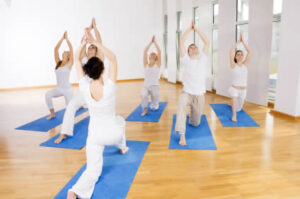
Summary : This summary discusses the difference between yoga and Pilates.
- Yoga is more focused on flexibility, mindfulness, and static poses, while Pilates is more about core strength, controlled movements, and the potential for rehabilitation.
- When it comes to recovering from injury, Pilates often offers more structured rehabilitation benefits, while yoga is great for improving overall flexibility and reducing stress.
- Both practices can greatly improve posture, body awareness, and can work well together as part of a balanced fitness routine.
- Beginners don’t need any prior experience for either practice, but should choose based on what they want to achieve mental wellness (yoga) or physical conditioning (Pilates).
- With consistent practice of either discipline, you can start to see noticeable results within 4-6 weeks, and the benefits extend beyond just physical fitness to everyday functional movement.
Deciding between yoga and Pilates isn’t always easy. Both practices have some amazing benefits for your physical and mental health. However, they each approach body movement and wellness in their own unique way. Here at Fitness Enthusiast Central, we’ve helped thousands of practitioners find their perfect match between these two complementary disciplines.
The Yoga vs Pilates question is a hot topic for fitness buffs, wellness pros, and anyone looking for a way to escape the physical and mental stressors of the 21st century. Both have a lot to offer. Nevertheless, knowing the differences can help you decide which one is right for you. Let’s take a closer look at what makes each of these practices special. We’ll examine how they can help you on your path to better health.
Yoga or Pilates: Which One Is Right For You?
Whether yoga or Pilates is “better” is entirely subjective. It all depends on your personal fitness goals, physical condition, and what resonates with you mentally. Neither practice is inherently better than the other. They simply offer different routes to the same destination, improved health and fitness. The best one for you depends on what you’re hoping to achieve.
Many people who practice fitness eventually incorporate both yoga and Pilates into their routine. They find that the mindfulness of yoga complements the core strengthening precision of Pilates. Before you decide which one to do, it’s worth understanding the fundamental differences in origin, approach, and focus of each practice.
Pilates Created By Joseph Pilates
Yoga hails from ancient India, over 5,000 years ago, where it was a spiritual practice meant to unite the mind, body, and spirit. The physical poses (asanas) we commonly think of when we think of yoga were originally meant to prepare the body for meditation and spiritual growth. This rich philosophical background still influences modern yoga, even in its more fitness oriented Western adaptations.
On the other hand, Pilates is a much more recent invention. It was created in the early 1900s by a man named Joseph Pilates. He originally developed this system as a way to help injured dancers and soldiers in World War I recover from their injuries. Joseph Pilates referred to his method as “Contrology,” highlighting the importance of the mind’s role in controlling the muscles. The main goal of Pilates was (and still is) to build core strength, improve posture, and create balanced, functional movements.
Method: Holding Still vs Moving with Control
When it comes to yoga and Pilates, the main difference in their approach is the way movement is performed. Yoga usually involves holding poses or flowing from one pose to another. It focuses on coordinating breath and slowly deepening or lengthening the time spent in each pose. The goal is to find calmness in challenging poses. This builds both physical stamina and mental concentration through continuous effort.
“In yoga, you adopt a position and hold it or flow into different positions. In Pilates, you adopt a position and then challenge your core by moving your arms or legs. Both increase strength and flexibility, but through different methodologies.” Dr. Jane Goldfarb, Physical Rehabilitation Specialist
Focus: Mind Body Spirit Connection vs Core Strength and Stability
Yoga places significant emphasis on the spiritual dimension of practice, even in its most physically oriented forms. Many classes incorporate meditation, chanting, philosophical teachings, and mindfulness practices. The physical postures serve as tools for developing greater awareness and connecting to something beyond the physical self. In contrast, Pilates maintains a laser sharp focus on physical conditioning, particularly developing what Joseph Pilates called the “powerhouse”. These are the core muscles of the abdomen, lower back, hips, and buttocks. Mindfulness is important in Pilates for executing movements with precision. However, the spiritual element is less pronounced than in yoga.
How Do Yoga and Pilates Differ?
Yoga and Pilates may seem similar in that they both promote body awareness and controlled movement, but the two practices are actually quite different. Knowing these differences can help you decide which one is right for you, based on your fitness philosophy and goals. Let’s take a closer look at what sets these two practices apart.
While both practices have changed quite a bit from their original forms, many styles have been developed to cater to different needs. The core principles that differentiate them have remained the same across these variations. Thus, they provide different experiences for those who practice them. For a deeper understanding of these differences, you can explore this comparison of yoga and Pilates.
How the Movements Differ: Fluidity vs Accuracy
Yoga often involves a continuous, flowing movement from one pose to the next, especially in styles like Vinyasa or Ashtanga. This continuous movement gives yoga a dance like quality. It encourages yogis to move in time with their breath and find their own rhythm. The focus is on continuous movement and finding comfort in challenging poses. This allows for personal interpretation within the established forms.
When it comes to Pilates, the focus is on precision. Every movement is controlled and deliberate, and you need to be fully aware of your form at all times. The exercises are specifically designed to target certain muscle groups, and you need to keep your core engaged throughout. Unlike yoga, which has a more flowing style, Pilates exercises usually involve a certain number of repetitions. You need to pay close attention to your alignment and technique. Sloppy execution can lead to not getting the benefits, or worse, causing injury.
How Breathing Techniques Differ: Ujjayi in Yoga and Lateral Breathing in Pilates
Both yoga and Pilates consider breath to be a key component of their practices. However, they approach it in different ways. In yoga, there are a number of different breathing techniques, or pranayama, that are used. One of the most common is Ujjayi breath, which is used in many different styles of yoga. This is also known as the “victorious breath.” It involves slightly constricting the throat to create a sound that is reminiscent of the ocean while breathing deeply through the nose. This helps practitioners to stay focused, generate internal heat, and move mindfully between poses.
In Pilates, you use a method called lateral thoracic breathing. You take a deep breath in through your nose, and as you do, you expand your ribcage out to the sides while keeping your abs pulled in. Then you breathe out through your mouth, usually when you’re doing the hardest part of an exercise. This way of breathing helps you keep your abs pulled in, which is important for supporting your spine and controlling your movements. It also helps you stay focused and connected to what you’re doing.






